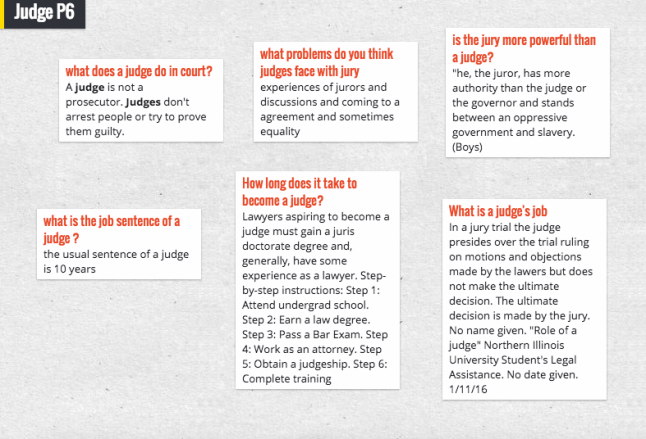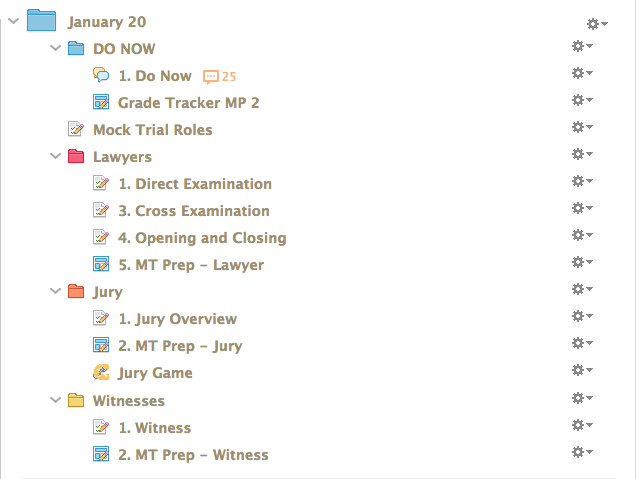
Two students during the mock trial.
Time. Pace. Path. Place. These four pillars of blended learning, although very important, are hard to implement especially all at the same time. I was first formally introduced to them last year during my first BRINC professional development training. In all honesty, I was 100% convinced that these wonderful ladies were speaking only to teachers in magical schools that have less than 20 kids in a classroom and unicorns roaming the hallways. Were these ladies trying to tell me that I was going to get all 34 of my students doing a different thing at a different pace?! The idea sounds great, but how could I possibly get my students who often struggle with simple directions to each follow a separate set of directions?
The idea is crazy. Truthfully, there are so many different institutional practices that must change before an environment like this is possible 100% of the time. And to easy my anxiety, my mentor/coach, Sarah, reassured me that there was no magic spell I could cast and poof! there would be a class working seamlessly together, yet at different paces, in different places, on different paths, at different times. Her suggestion: baby steps.
Here was my first attempt:
My students started a final project for a unit on Of Mice and Men. This unit project was the intro to argumentation. After reading the novella, students participated in a mock trial where one of the main characters, Lennie, was put on trial for killing Curley’s wife. (Yes, I know Lennie dies, but the writing project that follows works best with Lennie on trial).
First, I had students participate in a jigsaw/Internet Reciprocal Teaching activity to research the different roles in a courtroom. They posted their findings on Padlets made visible to the whole class on Schoology. Students created job descriptions on the topic they researched.

Students then worked with a partner of their choice to learn even more about the courtroom by competing against each other using an interactive courtroom game from Scholastic’s website. At the end, they used what they learned to “apply” for whichever job they thought they were best suited for. They applied using Schoology‘s quiz feature, giving their best argument for why they should be selected for that job.
The next couple of days, students were able to work with partners to prepare for the trial. This is where Schoology’s folders and individual assign feature came in handy!

Based on their role, students had different assignments to complete and pages to view. While the prospectors and defense lawyers were working on creating opening and closing statements for the mock trial, jury members were analyzing a compilation from My Cousin Vinny and determining the strengths and weaknesses of the arguments being made.
I was elated that all of my students could be working on different assignments at the same time in harmony. This was simply a baby step in the direction. It made me hopeful that this could be a more normal experience for my students. Although it made me do a little happy dance, I have to admit it was A LOT of extra work. Think about it, instead of one lesson, one assignment, one assessment, multiple lessons, assignments, and assessments had to be created. The outcome, though, was worth it. I’m looking forward to making steps to giving my students opportunities to learn in a completely blended environment.

